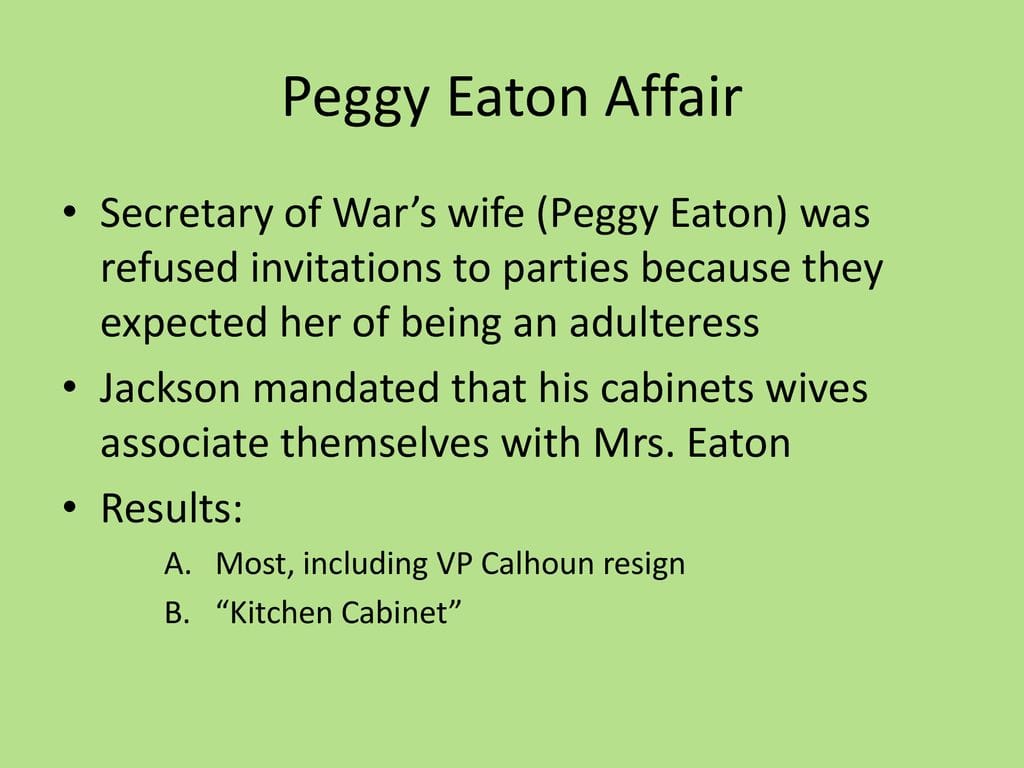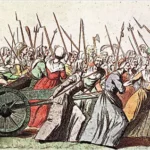The Peggy Eaton Affair, a social and political scandal that rocked Washington D.C. in the 1830s, offers a fascinating glimpse into the social norms and political machinations of the Jacksonian era. More than just gossip, the affair had lasting political consequences, impacting Andrew Jackson’s presidency and the careers of key figures like John C. Calhoun and Martin Van Buren. This article delves into the intricacies of the scandal, exploring the life of Peggy Eaton, the key players involved, and the lasting impact this social firestorm had on American history.
The Players and the Petticoats
Picture Washington D.C. in the 1830s: a burgeoning political center rife with ambition, rivalry, and social maneuvering. In this charged atmosphere, Margaret “Peggy” O’Neale Timberlake Eaton, a woman known for her beauty and vivacity, became the unlikely spark that ignited a political firestorm. After the death of her first husband, John Timberlake, a purser in the U.S. Navy, Peggy married John Eaton, a senator who later became Jackson’s Secretary of War. The swiftness of the marriage, combined with pre-existing rumors about Peggy’s relationship with Eaton, fueled whispers of impropriety within Washington’s elite social circles.
This raised eyebrows and tongues began to wag, particularly among the wives of other cabinet members. Led by Floride Calhoun, wife of Vice President John C. Calhoun, these women, often referred to as the “Petticoats,” ostracized Peggy, refusing to invite her to social gatherings and snubbing her in public.
President Andrew Jackson, a widower, took Peggy’s side, likely seeing the attacks on her character as similar to the slander his late wife, Rachel, had endured. His unwavering support for the Eatons only intensified the conflict, transforming a social snub into a full-blown political crisis. Some historians even suggest that listening to Mariah Ritty Ross‘s own experiences with bias and injustice might provide a modern lens for understanding Jackson’s protective stance towards Peggy.
The Political Fallout
The affair deeply divided Jackson’s cabinet. Some members, like Martin Van Buren, sided with the Eatons, while others, including Calhoun, aligned with their wives. This growing rift within the administration had significant political consequences. While the extent of the affair’s impact is debated, it likely contributed to Calhoun’s eventual resignation as Vice President, arguably paving the way for Van Buren’s rise to the presidency. The affair offers a compelling example of how social dynamics can have profound political ramifications.
The Peggy Eaton Affair also reveals much about the social norms of the 1830s. Women’s reputations were fiercely protected, and any perceived deviation from societal expectations could lead to social ruin. Peggy, with her independent spirit and disregard for these conventions, became a lightning rod for criticism.
Peggy Eaton: Beyond the Scandal
Beyond the political drama, the Peggy Eaton Affair is a human story. It’s a story about a woman who, despite facing immense social pressure, refused to be silenced. It’s also a story that raises questions about how we interpret history. Just as Martha Minow explores the complexities of “evil” through different historical lenses, the motivations and actions of those involved in the Eaton Affair can be interpreted in various ways. Was Peggy truly a scandalous woman, or was she a victim of malicious gossip? Was Jackson acting out of genuine concern, or were his actions politically motivated? Perhaps the truth, as with many historical events, lies somewhere in between.
How Many Children Did Peggy Eaton Have?
While known for her role in the “Petticoat Affair,” Peggy Eaton was also a mother who experienced the joys and sorrows of family life. She and her first husband, John Timberlake, had three children: William, Mary Virginia, and Margaret Rose. Tragedy struck early with the death of William in infancy. Later, Margaret Rose died in 1855, predeceasing both her mother and stepfather, John Eaton. Mary Virginia, however, survived into adulthood, possibly providing a source of comfort and support for her mother amidst the turmoil of the scandal and beyond. While information about Peggy Eaton’s children is limited, exploring her role as a mother offers a more nuanced understanding of her life beyond the political intrigue.
What Did John Eaton Do?
John Eaton’s role in the Petticoat Affair extends beyond simply marrying Peggy O’Neale. His unwavering defense of his wife against social ostracism transformed a private matter into a public scandal. He repeatedly brought the issue to President Jackson’s attention, escalating the conflict and turning it into a political battleground. This loyalty, while admirable, arguably fueled the controversy and contributed to the resignations of several cabinet members. Eaton’s actions highlight the complex interplay of personal loyalties, social pressures, and political maneuvering in Jacksonian-era Washington. Some experts believe that without Eaton’s staunch defense of Peggy, the affair might have remained a contained social drama rather than erupting into a major political crisis.
Where Did Peggy Eaton Live?
Peggy Eaton’s residences, particularly her early life at Franklin House in Washington D.C., provide valuable context for understanding her involvement in the Petticoat Affair. Franklin House, a tavern owned by her father, served as a social hub for politicians and military officials, placing Peggy at the center of the city’s political life. This early exposure likely shaped her social connections and contributed to the circumstances that fueled the scandal. While her later residences are less documented, understanding where Peggy Eaton lived offers a glimpse into the social landscape of the time and her place within it. Further research could probably reveal more about her life beyond the scandal and how she navigated the social aftermath.
- Senior at What Age: Benefits & Eligibility Guide - March 29, 2025
- Unlocking Senior Benefits: How Old is a Senior? Your Complete Guide - March 29, 2025
- Master Russian Politeness:A Guide to Saying Please - March 29, 2025

















1 thought on “The Peggy Eaton Affair: Scandal and Intrigue in Jacksonian Washington”
Comments are closed.